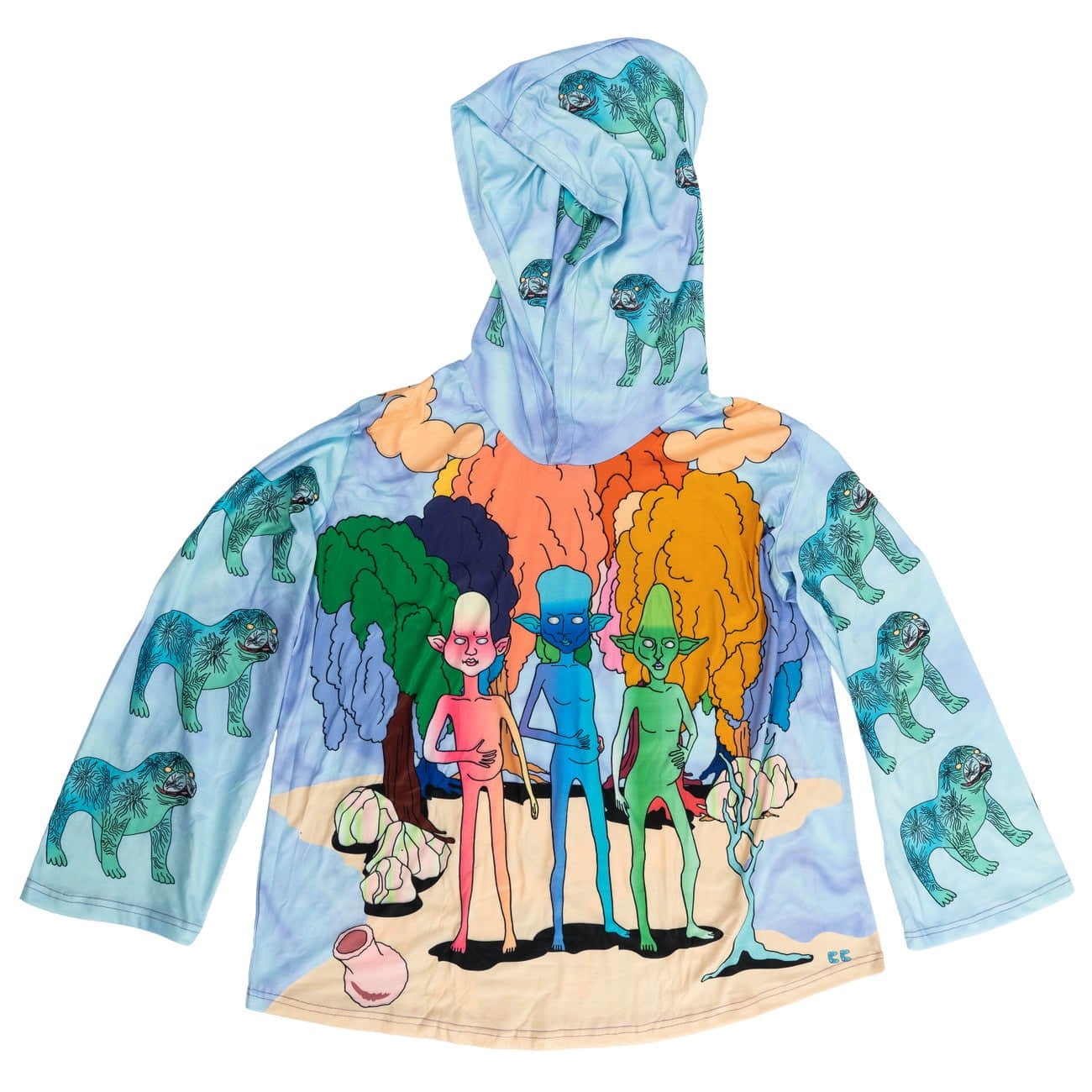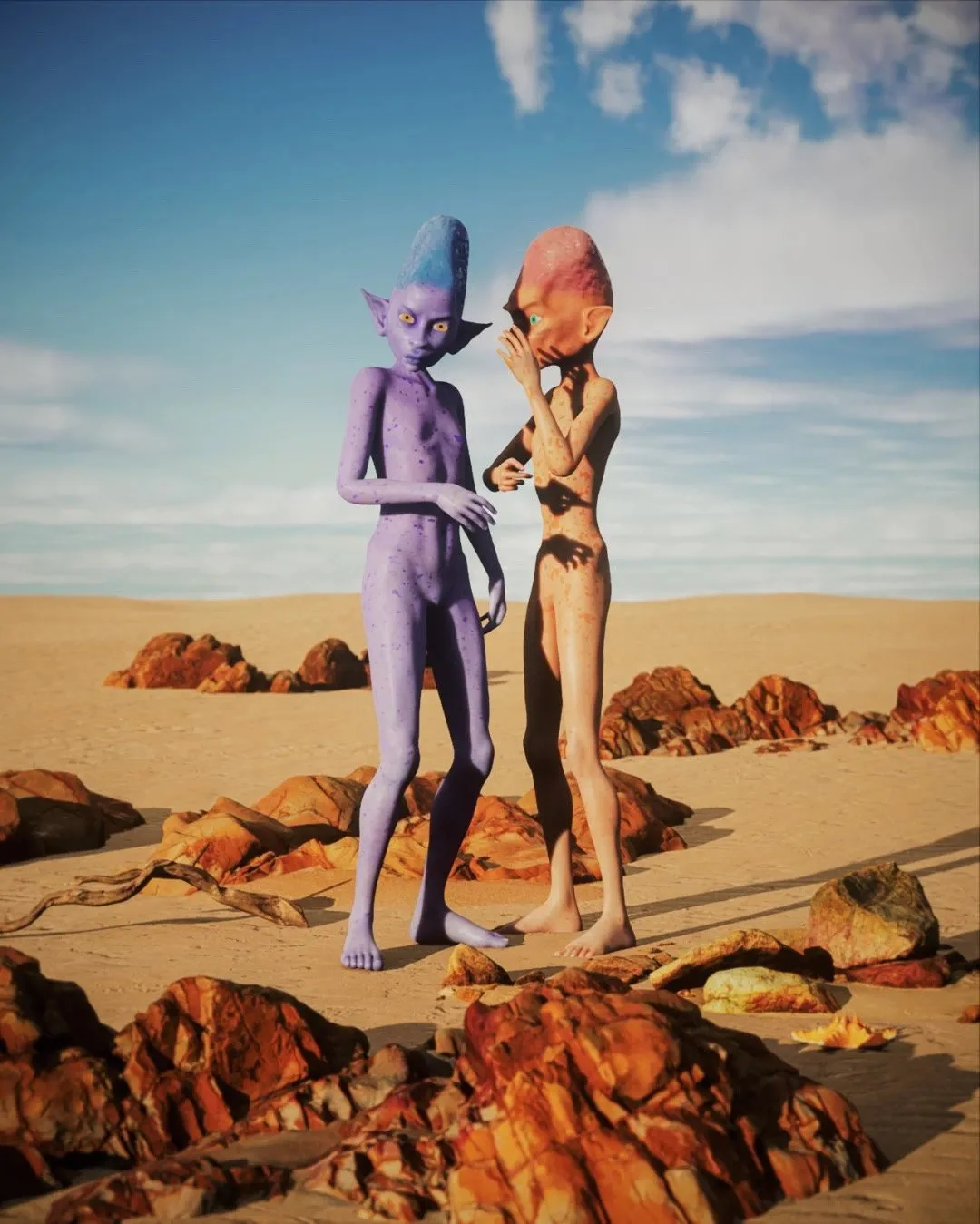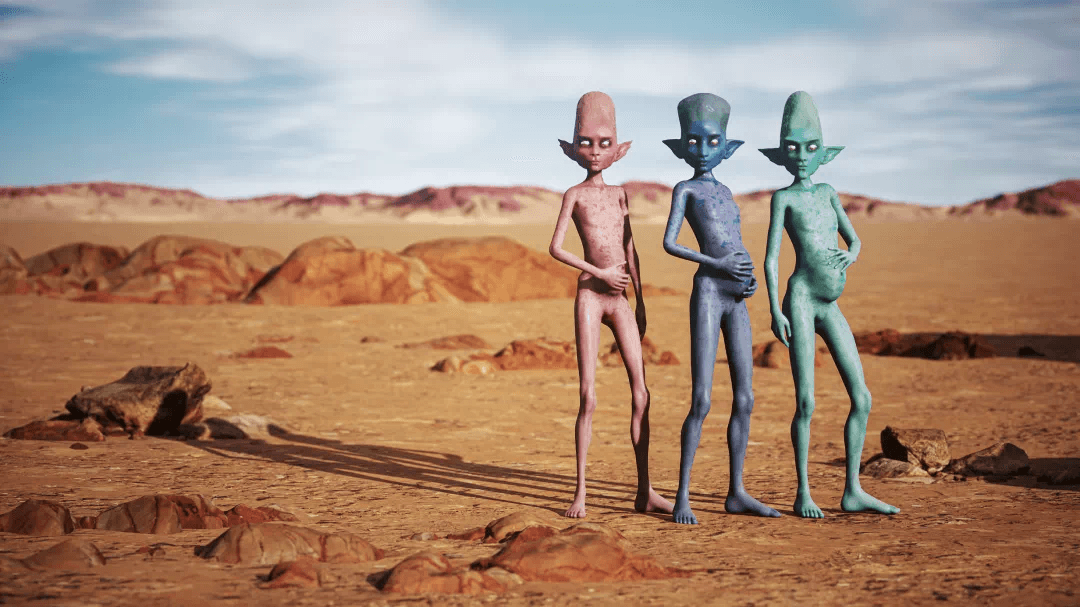Fertile Strains
Living in a world so fragile and delicate nowadays, destroyed by industry and climate change, art project Fertile Strains provides a dialogue on a different species, perhaps living and adapting on our planet that we have so heavily altered. On Instagram, you can follow the story of this strange, manufactured, fictional species named Strains, introducing us to their ways of living and conception.
The species are 3D modelled as CGI avatars, with plastic-like, brightly coloured skin, large human-like eyes, pixie ears and long spotted limbs, rather comparable to fictional depictions of aliens, but in a more technological perspective.
Following the story so far, Strains appear to transcend time and limits of health and age, introduced to us through mythological videos depicting them ‘Before Time, After Time, Post Time and Now’ in slightly altered, evolved forms each time depending on the climate and state of the Earth in which they inhabit. The Strains’ story and timeline is somewhat up to viewer’s interpretation, hence the uncaptioned, very vague imagery we can decipher.
For example, we see some stills of the species sprawled on the floor, tragically dead, with human hand prints pressed upon their bodies- perhaps a dialogue on the nature in which we as humans treat our current world and society in the midst of the climate crisis.
In a completely opposite presentation, we also see the biological functions of this species, giving birth to their young through their stomachs and breastfeeding them through an umbilical cord. Ironically, each of these small hints into the evolution and lifestyle of the Fertile Strains is frighteningly similar to our own human timeline, yet presented in a futuristic climate, a dystopian future.
We know that you are also a multimedia artist. How is the Fertile Strains different from your previous works?
In the past I’ve made work with an aesthetic that’s grounded in present day reality, and generally the work hasn’t had an explicit narrative that continues over time. The Strains are more about the characters rather than a tight single look or concept, allowing for collaboration with artists who have different styles ‒ not something I’ve been able to do previously.
What inspired you to create the Fertile Strains?
The Strains started as a NFT project. I liked the randomized generation logic behind a number of collectable NFTs (CryptoPunks type stuff), but the end result never looked that interesting. It felt like once you had seen a few of a given set, regardless of the style or character type, you would understand the rules used for creation and have no incentive to look further. I wanted to apply the randomization in a way that would end up with characters greater than the sum of their parts, that didn’t leave you feeling like you were looking at the rules used, but also that couldn’t have been created with conventional manual techniques.
Do you treat the Fertile Strains more as a fashion brand or an art project?
I think it’s best thought of as a flexible IP that can be used in various ways. I see the clothing and NFTs as integral parts of the world rather than there being a focus on a core aspect with everything else being secondary to that. For someone who buys the clothing the story will add depth and for someone enjoying the story it’s nice to have a shirt based on it. Conventionally with branded merch you buy to show your love for the brand to others, but in this case I imagine many will like the clothes without knowing that more exists.
Is there a political message behind this fictional species?
Yes and no. I don’t think anything they do is intended to comment on specific current issues. I’d like finding out about them to feel like reading about a past civilization ‒ they will do some things that we can relate to, some things that we feel are pretty fucked up and some things that we don’t understand.
Do they have a storyline? What is the narrative of the work for you?
Yes, the first chapter shows them preparing a temple type structure and the ‘fertile’ strains getting ready to mate. It ends with the mating ceremony and childbirth, neither of which occurs in a way that we’re familiar with as human. I’d like the story to continue as the first tribe encounters other groups with other cultures. There will always be a slight voyeuristic distance to the way the story is told and there will never be text or explanation. It’s tricky to present something linear and almost comic book like through social media. Instagram’s algorithms may decide to not show a post to certain people or may show the posts in the wrong order. I made the physical booklet to help with this, but I’d like to find other ways in future.
Do you relate to this species yourself at all?
Perhaps not really, but I do like them. Usually, I get sick of working on a project quite quickly, in this case I haven’t.
What is the dynamic and relationship between humans and fertile strains?
If there is one, it’s a passive consumption of the Strains’ existence on the human side. I expect there will never be any interaction between the two species or evidence that they live in the same universe.
The Fertile Strains has a slogan called ‘Fertile Strains exist beyond time’. How do you explain it?
Simply that they are somewhere else, somewhere distant. A mix of fairytale ‘once upon a time’ and sci-fi ‘in the far future’. For some people they are fantasy elves or goblins, for others an alien race, it’s not important.
With such technological visuals, is there a dialogue on digital advances for the future with your work?
With previous work I was more excited about commenting on the tech used to make it, not so much now. I’m not sure if that’s because CG is so ubiquitous or because I’m too familiar with it. While CG (and the simplicity of programming in the Unreal Engine) has enabled the Strains to exist in the form they do now, conventional illustration fits them just as well visually. I was really happy with the work Cuscus the Cuckoos and others have made using the characters. In a sense I think the less precise the aesthetic the better, it makes the world feel bigger and more chaotic.
Where do you aim for the Fertile Strains project to go in the future?
I’d like to continue and expand the main story. I have more parts prepared but have been distracted by other work with specific deadlines, so the Strains have been pushed to the side. Ideally, I’d like it to be something I can work on over several years when time permits.
mastery: YANYAN
creative director: KIM LAUGHTON
interview AVA DUNNAGE
What to read next

















